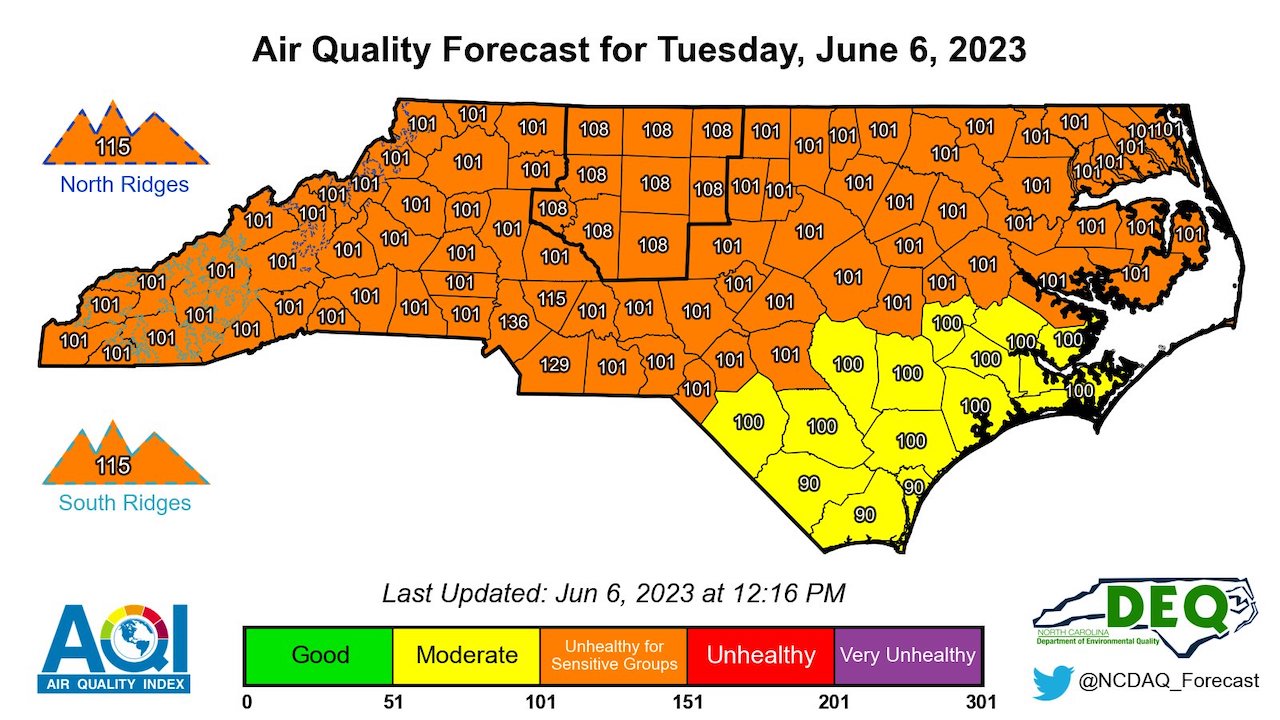A Code Orange Air Quality Action Day has been issued for much of North Carolina due to smoke and fine particles from active wildfires in Canada.
The North Carolina Department of Environmental Quality’s Division of Air Quality and the Forsyth County Environmental Assistance and Protection issued the air quality alert beginning at noon today.
The alert will remain in effect until midnight Wednesday.
All North Carolina counties are under the alert apart from southeastern North Carolina — specifically Robeson, Bladen, Sampson, Duplin, Lenoir, Beaufort, Columbus, Brunswick, New Hanover, Pender, Onslow, Carteret, Jones, Craven and Pamlico counties, which are expected to remain in the upper Code Yellow range through tonight.
Southeastern North Carolina’s forecast for Wednesday will be reviewed later today and may be updated to Code Orange as well.
Code Orange on the Air Quality Index indicates the potential for elevated levels of particle pollution that could impact sensitive populations, including older adults, younger children and those with respiratory conditions such as asthma.
These groups may experience health impacts when outdoors for prolonged times during these conditions and are recommended to limit prolonged or heavy exertion outdoors.
People unusually sensitive to air pollution may consider limiting their outdoor activities during a Code Yellow alert.
Smoke and accompanying high levels of fine particulates have been carried downwind from Canada into North Carolina today.
As the smoke continues to build into the state, high levels of fine particles are expected to mix near ground level.
Fine particulate matter, known as PM2.5, is comprised of particles smaller than the width of a human hair.
These particles can reach deep in the lungs and aggravate asthma and other lung conditions, and have also been linked to heart conditions.








